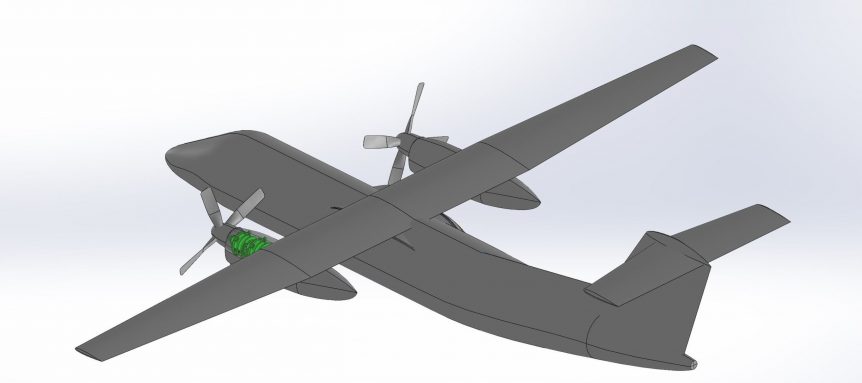Jeffrey Engler of Wright Electric has huge ambitions, including producing a 186-seat electric airliner and now testing a two megawatt “aviation-grade motor for transport-category zero-emissions aircraft.” If Engler’s vision becomes reality, “By 2040, Wright will eliminate carbon emissions from all flights under 800 miles.” Leap-frogging most other developer’s plans to make 10-, 19-, or even 50-passenger airliners, Wright plans a 186-seat, single-aisle airliner with distributed electric propulsion (DEP), spreading thrust across the wings and tail of the proposed craft Each motor will produce two megawatts (2,700 horsepower), greater than anything now flying. When your editor first started writing about this new technology, even model aircraft builders were ganging several small electric motors to produce enough thrust for “3D”-style flight, demonstrating the ability to hover on a propeller in aerobatics. In 1978, Fred To used four Bosch motors and a single propeller to power his Solar One machine. In a current perspective, the 2MW is equivalent to 66.66 Aerolite 103 motors, …
A Dash of Hydrogen
Getting the Parts Free, Charged for Refills What if future flight had a simple “return the old fuel container and get a new one” business model? Paul Eremenko, founder of California startup Universal Hydrogen, wants to try it out in a Dash 8 airliner equipped with two 2-megawatt motors supplied by MagniX. Poor analogy perhaps, but in his boyhood, your editor had a camera that was sold at the store complete with a roll of film already inside. All you had to do when you took all your pictures was send it by mail, with a check or money order, and a week later, you got the reloaded camera back with the prints and negatives of your pictures. This klunky, pre-digital plan carried over from Kodak’s version 100 years before. Today, with digital photography having supplanted those earlier, more tedious processes, we save on postage and wasted photos. Let’s face it – we all like rapid rewards and instant gratification. …


